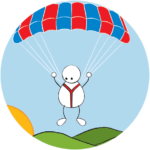
Me-Learning
This module is designed to guide you through a process of building the habit of Me-Learning in your students.
It invites you to undertake some rich activities in the form of learning experiments in your classrooms, helping you to organise your own discoveries and extend your own understanding of the power of building students’ learning habits.
Work through sections 1 – 4 where you will consider:
- Me-Learning and how it develops. Unpick the Me-Learning grid and plot where your students are now
- Taking Me-Learning into classroom culture. Think how to improve your classroom culture to better support Me-Learning.
- Teaching for learning; activities and talk. Look for ways of building Me-Learning into learning activities/tasks and the learning language.
- Team reflection and planning. Share the impact of your experiments with colleagues and plan what you need to do next.
Me-Learning and how it develops
1a) What do we mean by Me-Learning or Meta Learning ?
Meta-learning involves drawing out of your learning experience a more general, explicit understanding of the process of learning, and specific knowledge about yourself as a learner. Let’s take these two aspects of meta-learning in turn.
There is a wealth of research which shows that good learners know a lot about learning.
They possess a vocabulary for talking about the process of learning itself, and are able to articulate how learning works.
Good readers, even quite young ones, are often able tell you half-a-dozen things they can do when they come across an unfamiliar word: they sound it out, break it down into bits, re-read the previous sentence, read on to see if the meaning becomes clear, look at the picture and think about it, and so on. And so, more generally, for good learners. The more able they are to talk about their learning, the more likely they are to be able to apply their knowledge to new domains too: meta-learning increases generalisation.
And good learners also need an accurate sense of themselves as learners. Being a good learner means being able to take your own strengths and weaknesses into account as you are weighing up a learning challenge, or deciding on a course of ‘professional development.’
The skills and dispositions of meta-learning can be cultivated simply by a teacher’s persistent use of questions such as ‘How did you go about finding that out?’ or ‘How would you go about teaching that to other people?’
Extract from Building Learning Power by Guy Claxton 2oo2
1b) What does being a good Me-Learner involve?
We have given meta learning the friendly title of Me-Learning. Becoming a Me-learner; being able to assess the effectiveness of your own learning process and regulate it for greater success, is made up of several strands; How you become and stay motivated and plan your learning, how you build and organise your ideas; how you learn with and from others; how you manage your learning environment and how you monitor your learning process itself in order to improve. When looked at from these diverse angles, growing meta learning moves well beyond encouraging a student to ‘think about it’.
The progression grid is made up of sections from several of the other learning behaviours that you will have come across previously. Here they are drawn together to reflect a person’s self knowledge about their learning. The grid below captures of the constituent parts of building the habit of Me-Learning
Our progression grid for Me-Learning has 6 components:
Download grid as a pdf1c) Unpicking the columns; what contributes to Me-Learning?
The grid columns are things that might combine to make up the skills and attitudes of Me- Learning.
 Overview of the grid
Overview of the grid
John Biggs (1985) is credited with creating and defining the concept of Meta learning His conception is framed around the ideas of “being aware of and taking control of one’s own learning”. Implicit within this conception are the ideas that people need to have a knowledge of how they learn; have the motivation to be proactive in managing themselves in this way; have the capacity to be able to regulate their learning.The grid intertwines these important contributors to growing in the habit of Me-Learning; how we act in a progressive manner with other people and with available social, physical and intellectual resources learning how to learn.
“The knowledge worker needs one thing only: to learn how to learn”
The great business guru Peter F Drucker
Take a closer look at what each column of the grid is about
 How I get motivated and plan my learning.
How I get motivated and plan my learning.
What we do to get started on learning
Proactive leaners get involved in thinking about learning before they start. This involves analysing a task and wondering if they are motivated enough to make a start. We are unlikely to engage in tasks or set goals and make a plan if we aren’t interested in them. We are also likely to think about whether we have the necessary ‘means to learn’. Do we have the skill and the will and will it be worthwhile for us? As we go along we gain added motivation from seeing our knowing about the subject grow from engaging in the process. When we bump into difficulties we have strategies to help us keep going through the inevitable hard slog bits. We can work through a process of dissatisfaction to satisfaction as understanding emerges.
 How I build and organise my ideas.
How I build and organise my ideas.
How do I work with ideas?
The next contributory factor in Me-Learning has to do with gathering and using information. What sort of information is needed and where does it come from? How does it fit with what I already know about and how Can I retell the ‘story’ of this differently so that I’m incorporating the new ideas with the older ones. How could I distill and refine this new thinking into words or pictures or a recipe or a diagram so that I can make sense of it and other people can too.
 How I learn with and from others
How I learn with and from others
Me-learners know how to learn from others, not necessarily face to face or in teams but more and more through distributed electronic contact. They share their hypotheses with others, they pose questions and absorb others’ perspectives. This becomes an iterative process in gaining new ways of knowing and new insights until the learner is happy to craft their ideas and thoughts for the desired outcome.
 How I manage my learning environment.
How I manage my learning environment.
Getting comfortable for learning
The effective Me-learner understands that the learning environment needs structuring in order to optimise their learning effort. Some will be content with a computer, others will need acres of space and lots of paper and pens. Some like it hot, some work best in the small hours. They will be cognisant of their physical surroundings and their emotional state. They learn how to manage distractions, how to channel their emotional energy positively and how and when to break state.
In other words, they learn how to regulate their environment just as much they are regulating other aspects of the learning process.
 Talking about my learning
Talking about my learning
The voice of self-awareness
Self-talk is what we say to ourselves as we learn. The statements capture what someone in each phase of the grid might be thinking. Students may use some of these phrases when talking with you, or in writing from time to time, but mostly self-talk goes on inside their heads. We have shown a small flavour of self-talk thoughts that teachers can encourage students to imitate. Some relate to setting about learning, others to talking through which learning methods or resources might be useful, and others to monitoring and evaluating the learning being used. All such self-talk is important in building a Me-Learning habit.
 How I monitor and evaluate my learning.
How I monitor and evaluate my learning.
Keeping an eye on the how of learning.
The last constituent of Me Learning has to do with how we self-observe how our learning is going as well as the conditions that surround and influence it Self-monitoring enables you to adjust how you are doing things and whether it is effective enough to achieve the goal; there is a causal link. It’s the goal that’s important and keeps you going. This means that even though you might have to alter your environment, or take account of some negative feelings, or clarify more information all these encourage further effort to improve, in order to reach your goals.
What do you think?
- What have you learned about Me-Learning from these descriptions?
- What have you had confirmed?
- What surprised you?
- How have your views changed?
Make a note of…
- Any ideas for practical classroom experiments that these descriptions have triggered
- Which column your students are most secure in.
1d) Unpicking the rows; getting better at Me-Learning.
Of course, the development of Me-Learning doesn’t grow neatly up each column or evenly across the phases in the grid. The five broad phases of dispositional growth (purple – orange) are affective ways in which people may be inclined to behave: we call this inclination ‘mindedness’.
Here is our interpretation of how Me Learning might grow.
Meaning behind the phases
The phases are drawn from Bloom’s taxonomy of the affective domain.
Phase ‘Receives’ (purple) is about doing something because you are told or expected to.
Phase ‘Responds’ (blue) is about gaining interest and doing things more willingly.
Phase ‘Values’ (green) is a key phase since the student now sees the value of behaving in this way. It’s a win for them; to behave like this is in their interest. It’s in this phase that the behaviour becomes more secure.
Phase ‘Organises’ (yellow) is the phase in which the student capitalises on this ‘in their interest’ behaviour and gets themselves organised to use it positively.
Phase ‘Embodies’ (orange), known as ‘characterised’ in the original taxonomy. In this phase the student has made this behaviour their own. It has become part of their character; they can’t not do it and they have become highly skilled in doing it.
We urge you to see this progression as long term. Some phases will take years for people to work through; some will never be worked through. None of the phases are inevitable. There is a lifetime of development captured here. Nevertheless, the role of a teacher or parent should surely be to encourage and enable this journey.
Lacks: Minded to ‘just do things’
In this ‘Lacks’ (grey) phase, students are not necessarily aware of learning, they are just doing things. They have no language to talk about learning and the word learning itself is hardly part of their repertoire. Self-reflection of any sort is unlikely to figure in their lives.
Receives: Minded to be interested in learning .
In the Receives (purple) phase, students are aware of what interests them and how to find information. They know that some surroundings are better than others for learning and that they can learn from other people. They are showing an interest in learning and enjoy finding out about lots of things.
Responds: Minded to have a sense of direction in learning.
In the Responds (blue) phase, students have the developed the skill of knowing what they want to achieve and be motivated to do so. They can visualise the broad direction they want to go in, call on others to guide their thinking and make a realistic plan based on their learning strengths. This phase is a big step up from the one before; it requires a broad range of skills which are undertaken consciously. (eg visualising, being aware of their learning skills, goal setting, outline planning, choosing surroundings.
Values: Minded to enjoy their learning effort.
In the Values ( green) phase, students are aware of how their learning is growing and they are careful to capture this new awareness in in drafts or models or trial artefacts.They are moulding their environment to meet their needs and their enthusiasm helps them to keep going and manage distractions. They are using a wide variety of learning methods and value the opportunity to discuss things with others. They are consciously aware of keeping all these elements on track.
Organises: Minded to refine what they are learning to meet their goals
In the Organises (yellow) phase, Me-Learning has become a skilful habit. Reviewing progress now turns to evaluating the emerging outcomes and adapting the learning process to make sure the goal is achieved and get through difficult times with well-paced downtime. In some cases, students may question the original goal in this phase and take action on another path. They use knowledgeable experts to help refine their thinking.
Embodies: Minded to self-regulate all aspects of their learning process
In the Embodies ( orange) phase, students know themselves well as learners ; their learning strengths (their questioning, imagining, reasoning, noticing, listening, linking skills); how to motivate themselves; how to search for ideas and blend them into understanding; how to work purposefully with others and tweak their learning environment for comfort. They self-regulate themselves as learners to accomplish their self-determined goals.
What do you think?
- What has struck you about the act of Me-Learning having read the descriptions above?
- Which phase do you operate in?
- What makes you say that?
Make a note of…
- What you might do to assist your students to make headway in their Me-Learning behaviour.
- Any practical ideas the text has triggered.
Activity 1
Download grid to colour in- Colour in the cells where you think your pupils are secure.
- Draw a red line across the grid to denote where you think most of the school’s students could and should reach by the time they leave.
- Please take the results of these tasks with you to the Professional Learning Team session shown in Section 4
Taking Me-Learning into classroom culture
As teachers, we are in the habit-forming business. Those habits that we model in front of young people influence the ways in which they perform and behave. Therefore, we need to be sure to foster productive learning habits. If, for example, we don’t offer students a language and opportunities to talk about themselves as learners, we are not building their potential to become self-regulating . In such ways do good teachers, albeit inadvertently, stifle the very behaviours they are seeking to promote.
Activity 2: How well does my classroom climate encourage Me- Learning?
A classroom climate that supports and nourishes the inclination to reflect on and learn from the process of learning is characterised by an interest in the ‘how’ of learning, a belief that reflection consolidates learning and that responsibility for learning lies with the learner.
To bring about a learning-how-to-learn culture, the teacher needs to believe that;
- Learning how to learn is indeed possible and learners can take control of their own learning
- Talking about the process of learning (the how) is of equal importance to talking about what has been learned
- A coherent and consistent language for talking about the learning process helps learners to understand themselves as learner
And through a friendly learning-how-to-learn culture, students will come to believe;
- I have command of my learning habits
- How I do things is as important as what I do
- Talking about the process of learning helps me to become a more effective learner
Get a feel for your classroom culture and how it may be working for or against building students’ understanding of themselves as learners.
Look through the ideas carefully and consider whether you already use some, and whether any appeal to you to try.
What do you think?
- What do your answers suggest?
- How does your picture of classroom culture contribute to students’ approaches to Me-Learning?
- Is this broadly negative or positive?
- What insightful ‘Ah ha’ moments did you have as you read through the list?
- How have these changed your view of Me-Learning?
Make a note of…
- An idea on the list you want to start doing
- Any ideas that look as if they might help students to become better at Me-Learning.
Teaching for learning; activities and talk
So far, you have:
- Looked at your students through the lens of the Me-Learning learning grid
- Gained a sense of what becoming better at Me Learning looks like
- Considered how you might shift the culture of the classroom to nurture Me-Learning
Now we look more closely at classroom activities and language to provoke and guide students to get better at Me-Learning; to build the phases of Me-Learning mindedness.
Go to the phase that you have already identified as the one that most of your students need to develop next.
In each Tab box below you will find; an overview of the teacher’s role; a couple of ‘quick wins’ or introductory activities; a couple activities to surface Me Learning;a routine or two; some suggestions for teacher talk and If- Then statements; Reflection Mat.
Moving from Grey → Purple
Receives: Minded to be interested in learning .
In the Receives (purple) phase, students are aware of what interests them and how to find information. They know that some surroundings are better than others for learning and that they can learn from other people. They are showing an interest in learning and enjoy finding out about lots of things.
The essence of this phase is about moving from having little or no awareness of learning as a process to recognising that they have a key role in their own learning; that it’s something only they can do…with a little help from others. It’s the start of a journey whereby they come to understand their learning habits, how to use them to advantage and how to manage the process for themselves.
In pursuing this phase, the role of the teacher becomes one of:
- Introducing the idea of what learning is about
- Exploring pupils’ role in learning
- Exploring who and what can help them to learn
Learning Toolbox.
Discuss learning behaviours and link each one with a tool, following children’s ideas about the links. Display pictures of the tools labelled with the behaviour they represent. Collect real tools to be handled in class. When talking about learning behaviours ask children which tool would help them to learn something and why.
Show and talk about this animation. Or make your own.
A Visible Thinking Routine
Have you met something like this before ? What did you do then ?
To be used when a student is confused or stuck.
The twin questions require students firstly to make links back to prior learning, and secondly to think about what they did on that occasion. It is the question ‘What did you do then’ that turns the focus on to the ‘how’ of learning.
If the answer to the first question is ‘No’, the second question becomes ‘What might you do ?’. but this will need to be carefully scaffolded at this phase. The teacher may need to suggest two or three possibilities from which the student chooses.
Teacher talk
To nudge students from Grey to Purple, use language like this to nudge each column of the grid:
To take an interest and find out more
- What do you like doing? Why?
- What was your favourite thing today?
- Which bit did you enjoy the most?
- What is your favourite . . ?
- Why do you like that?
- Do you want to find out more about . . . . .
- Tell your friend why you like . . .
- Let’s think about what went well to-day.
To gather the necessary information
- What do you need to know before you make a start?
- How will / could you find that out?
- Don’t rush. Gather what you need before getting going
- Where do / could you go to find things out
To seek information from others
- Who do you usually go to to find things out?
- Who could you go to to find things out?
- Who might know this? Will you ask them about it?
To think where they learn best
- Where is your best place to learn? Why there?
- What is it like when you are learning well?
- What stops you learning? How might you avoid that?
To talk about their learning
- Let’s talk about why that was so enjoyable
- What interests you?
- Can you describe how you learned that ?
- When you are doing XX what are you saying to yourself in your head?
- What ideas are running through your mind now?
To think back to past experience
- You could ask yourself if you’ve done something like this before
- You could ask yourself what you did last time you came across something like this?
- You could ask yourself whether this reminds you of anything?
To set an If/Then target from Grey to Purple, try:
If I’m faced with a problem to solve, then I’ll spend time thinking about how I intend to tackle it
If I’m faced with something new, then I will ask myself whether I have seen something similar before and try to remember what I did then.
Learning Mat
A Learning Mat is a simple tool to encourage pupils to become more self-aware of how they are using a learning habit. Basically, it’s an A3 or A4 laminated sheet that is kept on tables or used as part of wall display. It shows various aspects of a learning habit. Pupils refer to them during lessons, using them as prompts about the finer aspects of a learning habit that are being stretched. They help students to be able to join in meta-cognitive talk.
This mat is blank. You will find one that has suggested behaviours on in the Value/Green section. In this one you and your pupils could fill in some ideas for specific Receive/Purple behaviours that you want your pupils to start using. They can of course be individualised for specific pupils
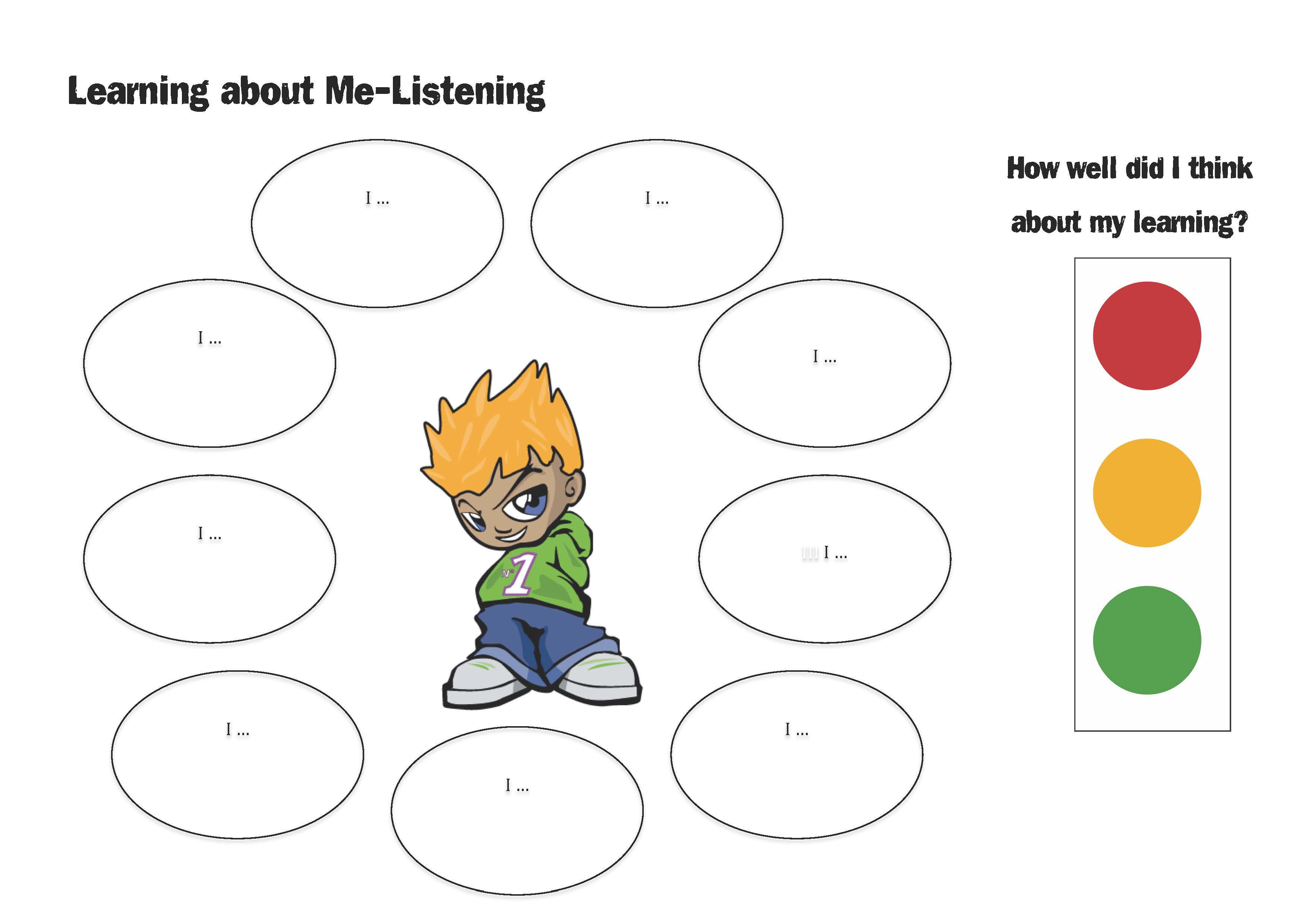
Moving from Purple → Blue
Responds: Minded to have a sense of direction in learning.
In the Responds(blue) phase, students have developed the skill of knowing what they want to achieve and be motivated to do so. They can visualise the broad direction they want to go in, call on others to guide their thinking and make a realistic plan based on their learning strengths. This phase is a big step up from the one before; it requires a broad range of skills which are undertaken consciously. (eg visualising, being aware of their learning skills, goal setting, outline planning, choosing surroundings.)
In working towards this phase, the role of the teacher becomes one of:
- Stimulating interest in learning
- Coaching students in goal setting and early planning (see Planning module)
- Talking about how learning happens (see Making Links)
- Ensuring students are willing and able to learn together ( see Collaborating module)
Moving from Blue → Green
Values: Minded to enjoy their learning effort.
In the Values ( green) phase, students are aware of how their learning is growing and they are careful to capture this new awareness in drafts or models or trial artefacts. They are moulding their environment to meet their needs and their enthusiasm helps them to keep going and manage distractions. They are using a wide variety of learning methods and value the opportunity to discuss things with others. They are consciously aware of keeping all these elements on track.
In working towards this phase, the role of the teacher becomes one of:
- Encouraging students to use rough note books to capture their draft thinking, models/diagrams
- Enabling careful self monitoring to keep themselves on track
- Orchestrating sharing of students’ new ideas.
Moving from Green → Yellow
Organises: Minded to refine what they are learning to meet their goals
In the Organises (yellow) phase, Me-Learning has become a skilful habit. Reviewing progress now turns to evaluating the emerging outcomes, adapting the learning process to make sure the goal is achieved and getting through difficult times with well-paced downtime. In some cases, students may question their original goal in this phase and take action on another path. They use knowledgeable experts to help refine their thinking.
In working towards this phase, the role of the teacher becomes one of;
- Making suggestions for getting through the struggle times
- Supporting students in refining difficult ideas
- Supporting self evaluation of outcomes.
- Offering ideas for self evaluative questions
Moving from Yellow → Orange
Embodies: Minded to self-regulate all aspects of their learning process
In the Embodies ( orange) phase, students know themselves well as learners ; their learning strengths (their questioning, imagining, reasoning, noticing, listening, linking skills); how to motivate themselves; how to search for ideas and blend them into understanding; how to work purposefully with others and tweak their learning environment for comfort. They self-regulate themselves as learners to accomplish their self-determined goals.
In this phase, the role of the teacher is one of being a co-learner.
By and large, students who are able to, reach this embodies phase for themselves; it’s the nature of the phase. But there may be relatively few people who naturally and characteristically behave like this in virtually any circumstance. The classroom and home cultures established at the previous phases aim to give people the best chances of achieving this phase, hence there is little need for direct teacher intervention. Rather, the role of the teacher/ coach/mentor becomes one of:
- ensuring there are sufficient opportunities available to display these high level behaviours;
- nudging, praising and supporting people to exercise them;
- modelling these behaviours themselves in their everyday interactions.
Ask yourself:
- Does the classroom culture actively support me learning at this level ?
- Does it need to?
- Is my own ‘nudging me learning’ language precise enough to keep nudging students to become highly-skilled me learners ?
- How well do I model these highly skilled me learning behaviours myself ?
- What phase of me learning behaviour have I reached?
Remember most people don’t ever reach these highly skilled phases.
Team reflection and planning
Session agenda
If this team session is your first one in Stepping Stones phase 2, miss out item 2.
1. Session objectives
What do we want to achieve? ( 5 mins)
2. Sharing classroom experiments
How did our experiments go? ( 20 mins)
Share
- the changes in practice you tried
- how students reacted
- what you learned
- what next as a result
Probe
- what was getting in the way?
- what seemed difficult?
- what would make it easier?
- what made it work particularly well?
- why it was successful?
- changes in your behaviour
Impact
- Avoidance of…..
- Improvements in……
- Increases in…….
- Little of no changes in…
3. Recapping on-line materials
What did we think of the materials? ( 15 mins)
Reactions to
- The Me Learning grid
- Where pupils are secure
- Where the pupils could be secure when they leave for secondary school
- Classroom culture ideas
- Activities and talk ideas
4. Planning what to do
What do we need to do next? ( 10 mins )
Decide
- Which ideas should we all adopt as a school strategy?
- How the progression of Me Learning should be built across the school. ie how the phases of Me Learning might play out against key stages and even year groups.
5. Personal action planning
What am I going to do? ( 20 mins )
5a.Consider
- how you want your pupils to improve/develop/enhance their approach to Me Learning?
- what you are going to do to bring this about?
- develop your enquiry question.
Think of it like this…
If I do XXXX will it improve/develop/enhance YYYY
This is the crunch question. Your pupils are unlikely to change unless you change!
Capture your learning enquiry as a question
Developing-an-enquiry-question-Revising-Me-Learning.pdf
5b.Put a short enquiry plan together
5c.Improvement indicators to consider for Me Learning
- motivated to get on with learning
- increasingly able to plan their own learning
- willingness to seek information/ideas from others
- better able to link ideas/information together
- more able to talk about how they are learning
- better able monitor what they are doing
- increasingly able to self-regulate their learning behaviours
- increasingly interdependent
- others you may have observed…
Or if you want to be more specific you could use the indicators from the progression grid
Download grid as a pdf6. Evaluate team session
How did we do as a team? ( 5 mins )
We wish you well with your rich activity/learning enquiry. Do let us know how it went…
Maybe you would like to write a blog about it to feature on our website for the benefit of the Building Learning Power community.

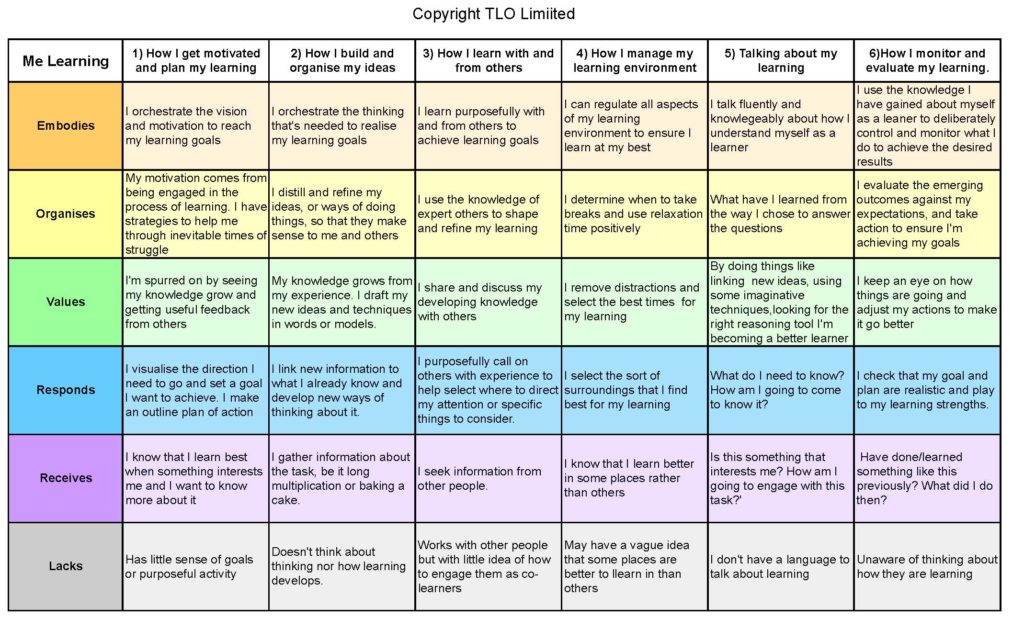
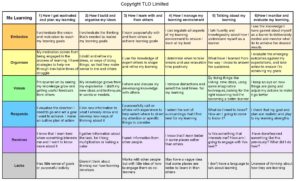
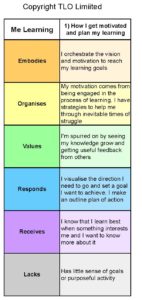
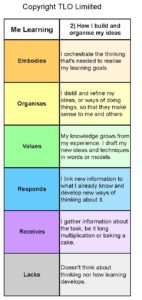
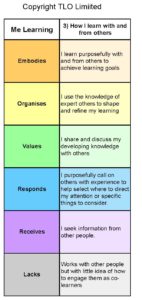
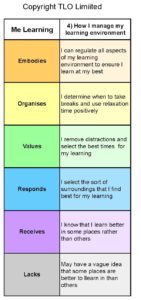
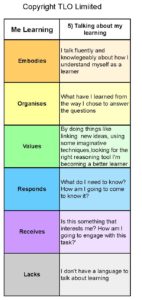
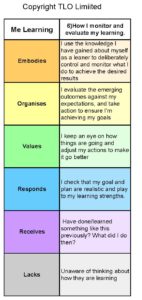







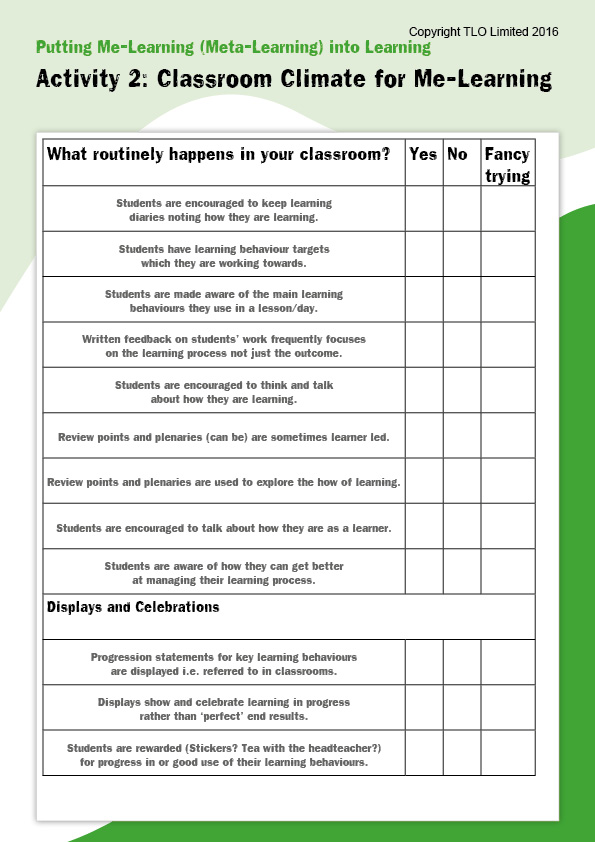
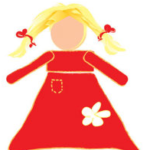
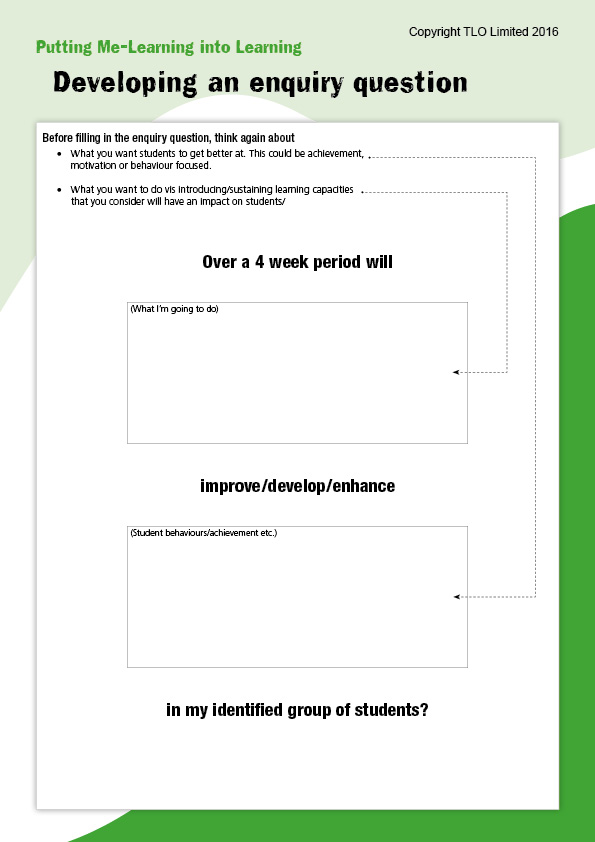
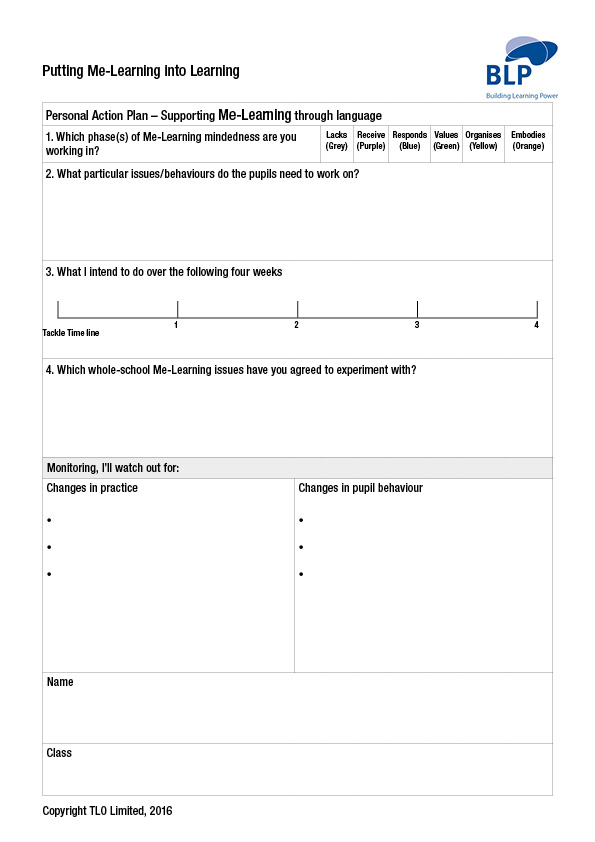
Comments are closed.